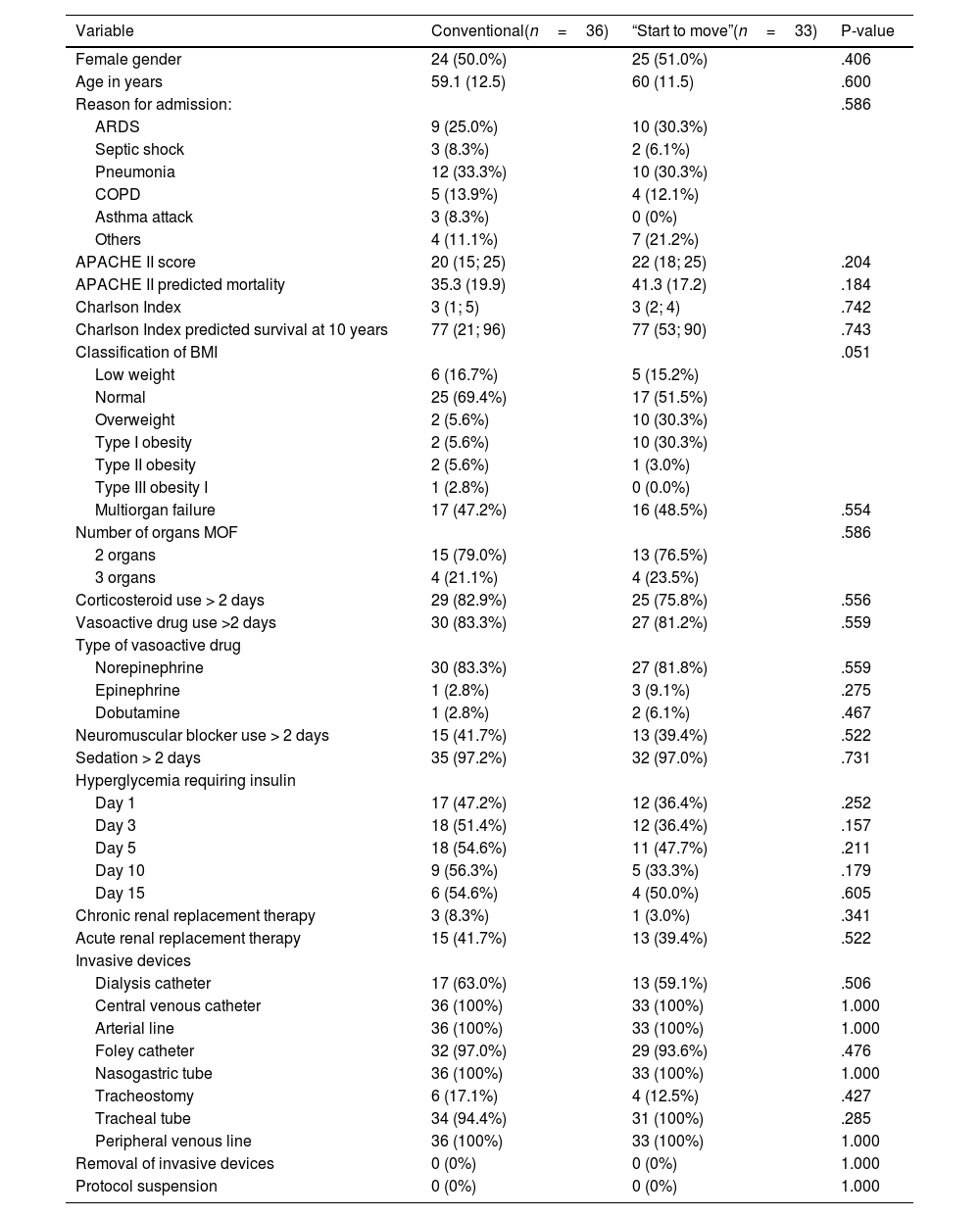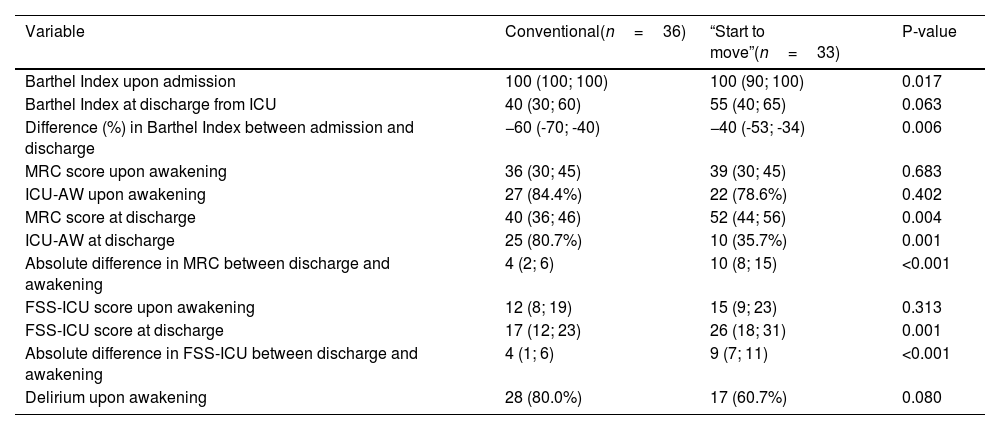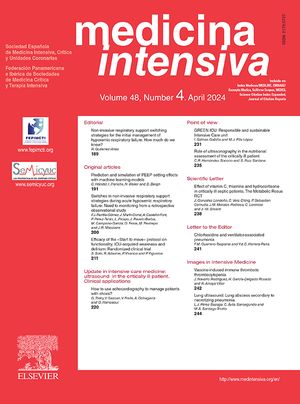To evaluate the efficacy of the Start to move protocol compared to conventional treatment in subjects over 15 years of age hospitalized in the ICU on an improvement in functionality, decrease in ICU-acquired weakness (DAUCI), incidence of delirium, days of mechanical ventilation (MV), length of stay in ICU and mortality at 28 days.
Designrandomized controlled clinical trial.
SettingIntensive Care Unit.
ParticipantsIncludes adults older than 15 years with invasive mechanical ventilation more than 48h, randomized allocation.
InterventionsStart to move protocol and conventional treatment.
Main variables of interestFunctionality, incidence of ICU-acquired weakness, incidence of delirium, days on mechanical ventilation, ICU stay and mortality-28 days, ClinicalTrials.gov number, NCT05053724.
Results69 subjects were admitted to the study, 33 to the Start to move group and 36 to conventional treatment, clinically and sociodemographic comparable. In the “Start to move” group, the incidence of IUCD at ICU discharge was 35.7% vs. 80.7% in the “conventional treatment” group (p=0.001). Functionality (FSS-ICU) at ICU discharge corresponds to 26 vs. 17 points in favor of the “Start to move” group (p=0.001). The difference in Barthel at ICU discharge was 20% in favor of the “Start to move” group (p=0.006). There were no significant differences in the incidence of delirium, days of mechanical ventilation, ICU stay and 28-day mortality. The study did not report adverse events or protocol suspension.
ConclusionsThe application of the “Start to move” protocol in ICU showed a reduction in the incidence of IUAD, an increase in functionality and a smaller decrease in Barthel score at discharge.
Evaluar la eficacia del protocoloStart to move comparado con tratamiento convencional en sujetos mayores de 15 años hospitalizados en UCI sobre una mejoría en funcionalidad, disminución de debilidad adquirida en UCI (DAUCI), incidencia de delirio, días de ventilación mecánica (VM), estadía en UCI y mortalidad a los 28 días.
DiseñoEnsayo clínico controlado aleatorizado.
ÁmbitoUnidad de paciente crítico.
ParticipantesIncluye adultos mayores a 15 años con VMI mayor a 48 horas, asignación aleatoria.
IntervencionesProtocolo “Start to move” y tratamiento convencional.
Variables de interés principalesSe analizó funcionalidad, incidencia DAUCI, incidencia delirio, días VM, estadía UCI y mortalidad-28 días, ClinicalTrials.gov número, NCT05053724.
Resultados69 sujetos fueron ingresados al estudio, 33 al grupoStart to move y 36 a tratamiento convencional, comparables clínico y sociodemograficamente. En grupo Start to move la incidencia DAUCI al egreso de UCI fue de 35,7% vs 80,7% grupo tratamiento convencional (p=0,001). La funcionalidad (FSS-ICU) al egreso UCI corresponde a 26 vs 17 puntos a favor del grupo Start to move (p=0,001). La diferencia en Barthel al egreso UCI fue de 20% a favor del grupo Start to move (p=0,006). No hubo diferencias significativas en incidencia de delirio, días de VM, estadía UCI y mortalidad-28 días. El estudio no reportó eventos adversos ni suspensión de protocolo.
ConclusionesLa aplicación del protocol Start to move en UCI se asoció reducción en la incidencia DAUCI, aumento en funcionalidad y menor caída en puntaje Barthel al egreso.
Article
Go to the members area of the website of the SEMICYUC (www.semicyuc.org )and click the link to the magazine.









